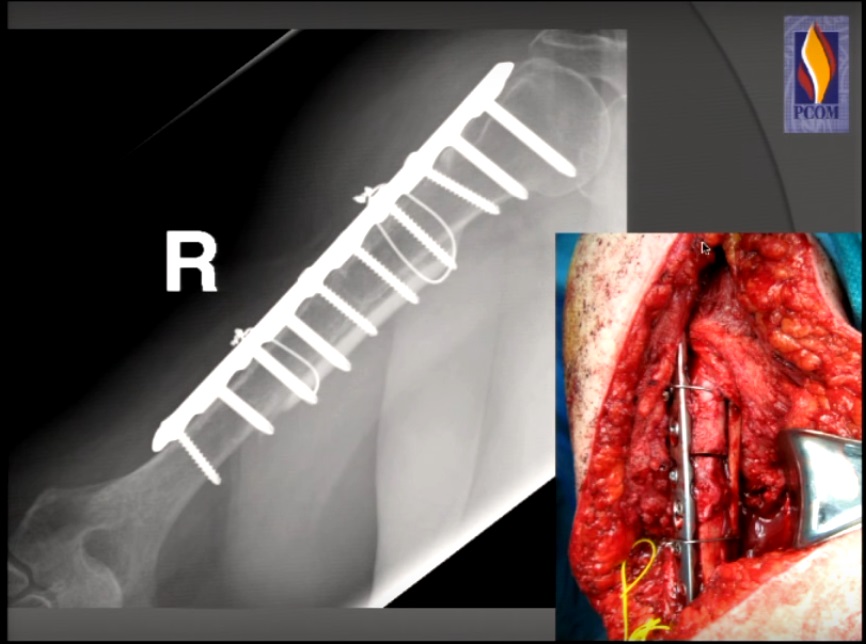

This surgical option would allow most patients to return to their pre-operative weight-bearing status immediately following surgery without the need for additional postoperative precautions. The purpose of this manuscript is to describe an alternative treatment option that would limit morbidity, and the need for proximal locking device or implant removal by excising the portion of the iliotibial band causing hip irritation at the level of the proximal locking device, while leaving the retained implant in place. Additionally, in certain situations (e.g., when the nail is placed for prophylactic treatment), its removal is contraindicated. This has generally been managed previously with implant removal, although studies have shown associated femoral neck fractures after removal even with the prescribed protected postoperative weight bearing. Conservative treatment options for this complaint include local corticosteroid injection and physical therapy, although once these treatments have been exhausted, surgical intervention may be recommended. Lateral hip pain from proximal locking device insertion and prominence continues to be one of the most frequent complaints regarding hardware irritation following this surgical procedure. As usage rates increase for these fixation devices, complications from their insertion are becoming more prevalent. 6, 2022.Peritrochanteric hip fractures are most commonly treated with proximal femoral fixation devices, such as a cephalomedullary nail or sliding hip screw.
#Orif intertrochanteric fracture update#
Update on medical management of acute hip fracture. Centers for Disease Control and Prevention. American Academy of Orthopaedic Surgeons. Hip fractures in adults: Epidemiology and medical management. If you don't feel steady when you walk, ask a health care provider or occupational therapist whether these aids might help. Have an eye exam every other year, or more often if you have diabetes or an eye disease. Make sure all rooms and passageways are well lit. Remove throw rugs, keep electrical cords against the wall, and clear excess furniture and anything else that could trip people. Drinking too much alcohol can also impair balance and increase the risk of falling. Tobacco and alcohol use can reduce bone density. Balance training also is important to reduce the risk of falls since balance tends to deteriorate with age. Exercise also increases overall strength, decreasing the risk of falling. Weight-bearing exercises, such as walking, help maintain peak bone density. Exercise to strengthen bones and improve balance.In general, men and women age 50 and older should consume 1,200 milligrams of calcium a day, and 600 international units of vitamin D a day. To avoid falls and to maintain healthy bone:

The same measures adopted at any age might lower the risk of falls and improve overall health. Healthy lifestyle choices in early adulthood build a higher peak bone mass and reduce the risk of osteoporosis in later years.


 0 kommentar(er)
0 kommentar(er)
